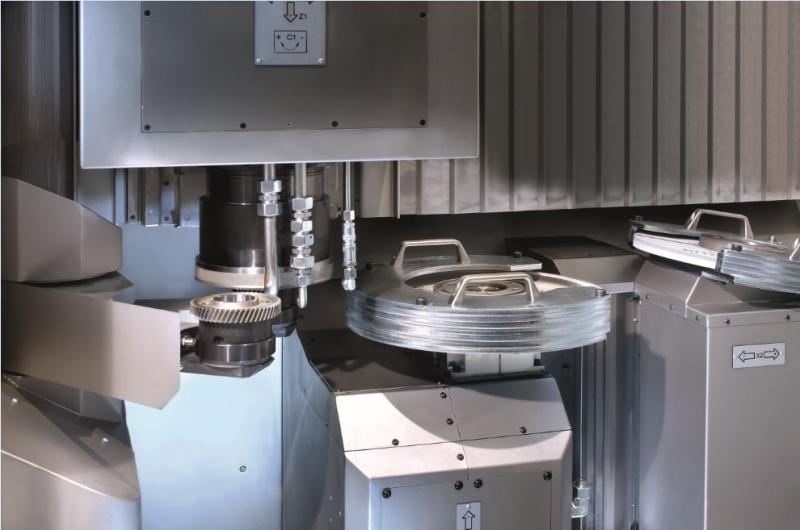
Accordingly, the grinding method used for hard-fine machining is of particular importance, since gear wheels or shafts must be machined highly precisely and effectively. The technology behind it is correspondingly sophisticated. For almost 150 years now, NAXOS-DISKUS Schleifmittelwerke GmbH, a member of the DVS TECHNOLOGY GROUP, has been manufacturing abrasives which these days are mainly used for the precision grinding of vehicle components. In order to achieve maximum customer benefit, the company cooperates closely with the grinding machine manufacturers within the group and develops joint system solutions. During optimisation of the combined grinding process of a BUDERUS CNC 235 A-SL built in 2012 and located at a major German car manufacturing plant, this coupling of tool and machine know-how proved extremely profitable once again.
The cooperation between the two DVS companies resulted in a significant increase in efficiency in the production process. The cycle time was reduced from 36 to 29 seconds, for example, which corresponds to a time saving of 20%. In addition, the dressing cycle increased from two to eight workpieces, which represents a huge step forward when the demanding requirements made on the surface are considered. Moreover, the dressing amount per hour of use of the grinding disc was reduced by approx. 55%, while the dressing amount was increased from 25 to 35 μm at the same time.
New KMX abrasive grit increases service life and output
The new abrasive grit “KMX” makes the crucial difference. NAXOS-DISKUS equipped the discs of the grinding machine BUDERUS CNC 235 A-SL with this abrasive. The car manufacturer uses the machine to grind the control gears for a 7-speed dual-clutch gearbox. Using a disc made of a special corundum and ceramic bonding, the machine grinds the control gear cone to precise dimensions and shape specifications and produces the required surface finish.
With the following output parameters, an average cycle time of 36 seconds including dressing process has been achieved to date:
- Cutting speed Vc: 48 m/min
- Feed 1st grinding: 2.6 mm/min
- Feed 2nd grinding: 1.5 mm/min
- Feed 3rd grinding: 0.8 mm/min
- Feed 4th grinding: 0.2 mm/min
- Dressing cycle: 2 workpieces
- Dressing amount: 25 μm
- Dressing speed: 283 rpm
- Dressing feed: 200 mm/min
New abrasive grit increases productivity
The key characteristic of this abrasive grit is its polycrystalline micro-structure with closed and open macro-pores. This macro-porosity between the individual crystals results in a high surface roughness, making the grit extremely free-cutting and improving adhesion in the abrasive matrix thanks to the large surface area. The advantages are higher feed and lower wear compared with conventional abrasive grit types. Thanks to a new ceramic bonding system, a greater load can be placed on the abrasive grit without it breaking out early. In addition, specifications with reduced bonding quantity can be depicted, reducing friction at the same time.
Cooperation pays
The following values were achieved through specific changes to parameters on site:
- Feed 1st grinding increased from 2.6 mm/min to 3.6 mm/min
- Feed 2nd grinding increased from 1.5 mm/min to 2.0 mm/min
- Feed 3rd grinding increased from 0.8 mm/min to 1.0 mm/min
- Dressing cycle from 2 to 8 workpieces
- Dressing amount increased from 25 μm to 35 μm
Engineers from NAXOS-DISKUS and BUDERUS Schleiftechnik with their experience and know-how were on site to ensure smooth machine commissioning, and remained available for the car manufacturer after the successful completion of the project.
Mens Running Shoes













